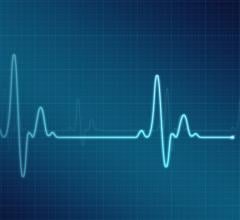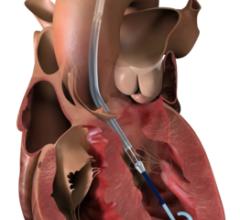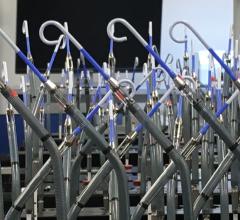April 24, 2014 — Allison Morgan was in pretty bad shape when the medical helicopter touched down on the rooftop helipad of the University of Alabama at Birmingham Hospital (UAB).
“I was within hours of death when they brought me in. All my organs were failing — lungs, heart, kidneys, everything,” Morgan later recalled.
Unconscious and suffering from extreme carbon monoxide poisoning, she did not realize her situation at the time. Her family told her the tale in the following weeks, a tale that first began with a borrowed RV in which she and husband Craig had joined friends from their home in Tennessee at the NASCAR race in Talladega, Ala.
“We drove down Friday, Oct. 18,” she said. “We got there in the early afternoon, hung out with everybody, had a shrimp boil that night and went to bed. And that’s the last thing I remember until I woke up at UAB 10 days later.”
During the night, carbon monoxide filled the RV, likely from a faulty generator. Craig Morgan did not survive. Allison Morgan was found by friends the next morning, and paramedics on the scene had her airlifted to UAB, the only level-one adult trauma center in the state. It was touch-and-go.
“She was experiencing multiorgan failure, and traditional therapy by means of a mechanical ventilator could not get enough oxygen into her body,” said Enrique Diaz, M.D., associate professor in the Division of Pulmonary, Allergy and Critical Care Medicine. “She was going to die that night.”
There was one last option—ECMO, or extra corporeal membrane oxygenation. ECMO is a technology using a portable heart/lung bypass machine originally developed for heart surgery.
ECMO takes on the function of the heart and lungs by routing the patient’s blood into the machine where carbon dioxide is removed and oxygen is added. The blood is then pumped back into the body.
ECMO is not without risk. Diverting the blood from the veins to the tubing that carries it to the machine and then back to the arteries requires a surgical procedure. Patients on ECMO require careful around-the-clock monitoring.
“Dr. Diaz told my family that there was a chance I could die during the procedure, but I was certainly going to die without it,” Morgan said.
With the family’s consent, Diaz, who heads UAB’s ECMO program, put Morgan on the machine. She survived the procedure and stayed on ECMO for seven days. The support provided by ECMO allowed her heart and lungs to rest and recover. Her other organs responded and recovered as well, and Diaz was able to wean her from the machine.
“There’s no question he and my family made the right decision,” Morgan said. “If they hadn’t, I wouldn’t be here. Dr. Diaz said when they made the decision to use ECMO I probably had two hours to live.”
Diaz said there is virtually nothing in the medical literature chronicling the use of ECMO for carbon monoxide poisoning, and such use is rare. The technology is not new, but said says improvements in recent years have made it a more viable option for a variety of heart and lung injuries.
“This technology has improved over time, and there have been many advances in the machines that have made ECMO much safer with wider applications,” he said.
ECMO is used during heart surgery and as a bridge to heart or lung transplant. Diaz and his team have used ECMO to treat nearly 20 patients with severe influenza this winter. He says it is now an option for patients with severe lung injury or heart issues such as cardiogenic shock.
The other key to successful use of ECMO is the expertise of a dedicated team of professionals, including critical care physicians and nurses, surgeons, perfusionists, and respiratory and physical therapists. ECMO machines, and the team that knows how to use them, are typically seen only in large hospitals such as UAB, with major critical care, transplant and trauma programs.
After a month at UAB, Morgan went home. Diaz expects her to have a complete recovery. At her first follow-up visit a month later, her heart and kidney function was back to normal, and her lung function was improving dramatically.
“People would say to me that I must really be a fighter, but I told them I had to survive,” said Morgan. “I’ve got a 4-year-old at home, and she needs me. She lost her father, so she needs her mother.”
Morgan is still coping with the loss of her husband. She was in intensive care at UAB and on ECMO during his funeral. She continues to mend both emotionally and physically, with a big boost from daughter Carly.
“I was released from the hospital Nov. 20, and Carly turned 4 on Nov. 21,” she said. “We had a party already planned for her for Nov. 23, so it was a really happy homecoming for me. It is unbelievable how many different things had to fall into place for me to still be here. The fact that they found me just in time, that they got me to UAB, where doctors were capable of saving my life with ECMO: all of that had to fall into place for me to survive.”
Morgan also credits family and friends, who organized around-the-clock shifts to have someone at her bedside while she was at UAB.
“There was just amazing support around me from my extended family, from friends and from UAB staffers, and that’s part of the reason that I’ve recovered as well as I have,” she said.
At her follow-up visit with Diaz, Morgan brought something special, a photo of Carly and herself taken at the birthday party. She delivered thank-you cards and copies of the photo to hospital staff who had cared for her.
“My message to them was — you made this possible. You made it possible that I could get home in time for her birthday, and hopefully many more birthdays to come.”
For more information: www.uab.edu


 October 23, 2023
October 23, 2023 








